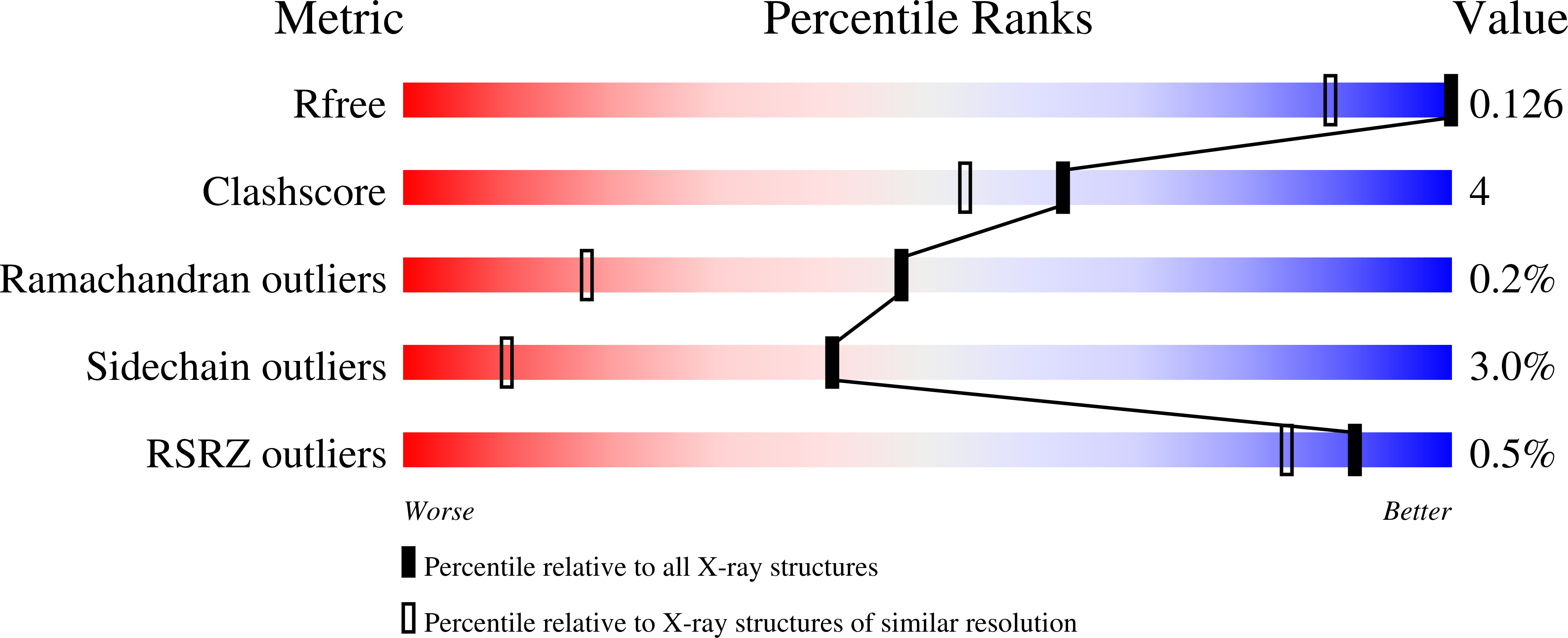Sub-angstrom-resolution crystallography reveals physical distortions that enhance reactivity of a covalent enzymatic intermediate.
Ludtke, S., Neumann, P., Erixon, K.M., Leeper, F., Kluger, R., Ficner, R., Tittmann, K.(2013) Nat Chem 5: 762-767
- PubMed: 23965678
- DOI: https://doi.org/10.1038/nchem.1728
- Primary Citation of Related Structures:
4KXU, 4KXV, 4KXW, 4KXX, 4KXY - PubMed Abstract:
It is recognized widely that enzymes promote reactions by providing a pathway that proceeds through a transition state of lower energy. In principle, further rate enhancements could be achieved if intermediates are prevented from relaxing to their lowest energy state, and thereby reduce the barrier to the subsequent transition state. Here, we report sub-?ngstr?m-resolution crystal structures of genuine covalent reaction intermediates of transketolase. These structures reveal a pronounced out-of-plane distortion of over 20¡ă for the covalent bond that links cofactor and substrate, and a specific elongation of the scissile substrate carbon-carbon bond (d?>?1.6??). To achieve these distortions, the protein's conformation appears to prevent relaxation of a substrate-cofactor intermediate. The results implicate a reduced barrier to the subsequent step that is consistent with an intermediate of raised energy and leads to a more efficient overall process.
Organizational Affiliation:
Albrecht-von-Haller Institute, G?ttingen Center for Molecular Biosciences, Georg-August University G?ttingen, 37077 G?ttingen, Germany.





















